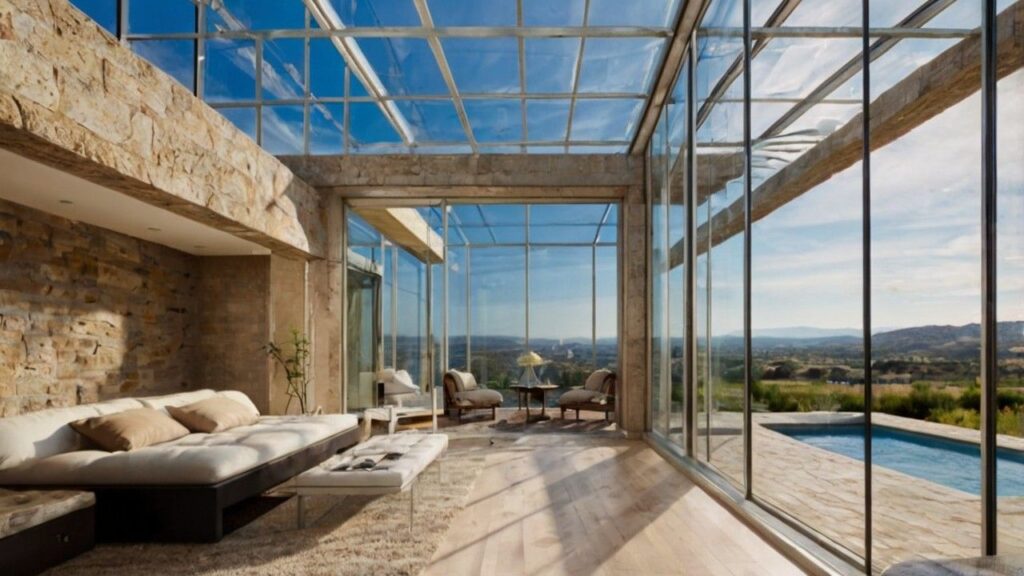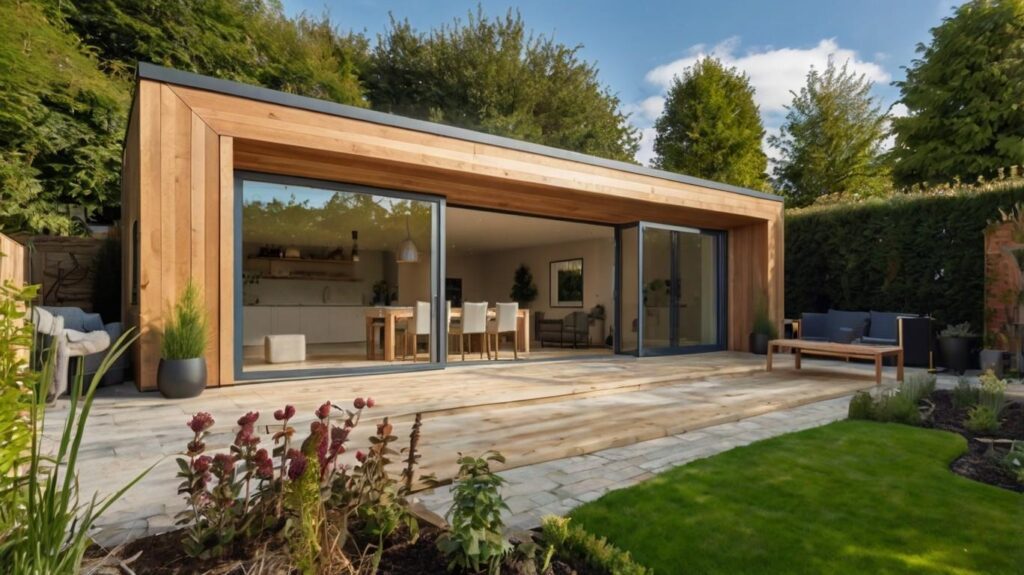Victorian Conservatory Guide: Pros, Cons, and Timeless Style Explained
Summary: A Victorian conservatory is a glass room that adds extra space to your home. It has a pointed roof and lots of decorative details that make it look fancy. These structures became popular in the 1800s and are still loved today. They can be expensive but add value to your home. Victorian conservatories work well as sunny sitting rooms or plant spaces.
Looking to add more space to your home? A Victorian conservatory might be perfect for you. These beautiful glass rooms have been popular for over 150 years. They mix old-style charm with modern comfort. Let’s explore what makes these conservatories special and if one would work for your home.
Why Should You Listen to Us?
Our UK-based team helped over 1M homeowners save up to 40% on home improvement quotes since 2006. By using our free no-obligation quote comparison service, you will receive the most competitive quotes from vetted and accredited local companies.
What Makes a Victorian Conservatory Special?
Victorian conservatories stand out from other home additions with their grand appearance. These structures combine glass, metal, and wood in a uniquely beautiful way. Their design comes from a time when British builders created spaces for both plants and people to thrive.
History at a Glance
Victorian conservatories first became popular in the 1800s. Rich people built them to show off their wealth. They also used them to grow exotic plants. The Crystal Palace in London, as documented by the Victoria and Albert Museum’s historical archives, inspired many people to build their own glass rooms. This architectural marvel changed how Victorians thought about glass buildings. The style soon spread from royal estates to smaller family homes.
Main Features
A Victorian conservatory, a timeless example of conservatory style, stands out because of its unique design elements. The steep, pointy roof creates an elegant look. Decorative metal work on top adds a royal touch. The fancy corner posts support the structure with style. Large glass windows let in plenty of natural light. The ornate metal or wood frames complete the classic appearance.
Parts of a Victorian Conservatory
A Victorian conservatory’s key parts create its unique charm. Every piece, from the steep roof to the ornate base, serves a purpose. It is both practical and decorative. The glass panels, ridges, and metalwork show Victorian craftsmanship.
The Roof
The roof is the most noticeable part of a Victorian conservatory. Rain runs off easily thanks to the steep design. It lets in plenty of natural light throughout the day. The height makes the room feel much bigger inside. During summer, the design helps keep the room cooler. From outside, the conservatory roof creates an impressive view that neighbors will admire.
Decorative Elements
Victorian conservatories showcase beautiful craftsmanship in every detail. Metal designs crown the roof with delicate patterns. Corner pieces feature intricate Victorian-era artwork. Window frames display detailed scrollwork and designs. According to the Glass and Glazing Federation’s historical research, modern Victorian conservatories use advanced glazing techniques that offer better insulation while maintaining period aesthetics. The brick or stone base provides a strong foundation with period charm.
Thoroughly Vetted Professionals
Every supplier in our network goes through a strict vetting process, including credit checks and accreditation verification.
Good Things About Victorian Conservatories
Victorian conservatories add both beauty and value to any home they join. These elegant structures provide a versatile space that works for many different activities. Their timeless appeal makes them a worthwhile investment that future buyers will appreciate.
They Look Great
Victorian conservatories add instant beauty to any home they join. Their unique design makes them stand out from regular home additions. Older houses benefit from their matching period style. These spaces create a special atmosphere in your home. Your house will look more appealing from the street.
They Add Value
A well-built Victorian conservatory increases your property’s worth significantly. Future buyers often look for homes with special features. The extra living space adds practical value to your home. These conservatories become talking points during home sales. With proper care, they last for generations.
They’re Versatile
Your Victorian conservatory can serve many different purposes over time. Many people enjoy using it as a bright sitting room. Others turn it into an elegant dining space. It works well as a quiet home office away from noise. Plant lovers create indoor gardens in these light-filled rooms. Some owners use it as a peaceful reading retreat.
Challenges to Consider
Owning a Victorian conservatory requires careful thought about ongoing care and costs. The unique design features need regular maintenance to stay in good condition. Heating, cooling, and repairs can add up over time.
Costs
Victorian conservatories require careful financial planning before construction begins. They cost more than standard home additions or basic conservatories. Regular maintenance needs add to the yearly expenses. Repairs might need special materials or skilled workers. Your heating bills may increase during cold months.
Regular Tasks
Maintaining a Victorian conservatory takes regular effort throughout the year. Windows need frequent cleaning to stay clear and bright. As recommended by the National Home Improvement Council’s maintenance guide, monthly inspections of all seals and joints help prevent costly repairs. Gutters must stay clean to work properly. Loose parts need fixing as soon as they appear. Period Property UK’s conservation experts suggest using breathable paints for traditional conservatory frames to maintain authenticity while protecting the structure.
Common Problems
Victorian conservatories face several challenges through the seasons. Temperature changes can affect the structure over time. Moisture sometimes builds up inside during wet weather. Strong storms might cause damage to delicate parts. Glass panels may crack and need replacement. Seals can wear out and let in drafts.
Choosing Your Style
You must pick a style for your Victorian conservatory. It should match your home. The colors and designs you choose will affect how the space feels all year round. Traditional elements can mix well with modern comforts to create the perfect room.
Colors
Victorian conservatories often come in traditional color choices. White remains the most popular option for a classic look. Green suits homes with garden surroundings. Cream offers a softer approach to traditional style. Brown creates a natural, earthy appearance. Gray provides a modern take on period design.
Inside Design
Your furniture choices matter greatly in a Victorian conservatory. Comfortable chairs create inviting seating areas. Small tables provide space for drinks and books. Soft cushions add comfort and style to the room. Indoor plants bring nature into your space. Good lighting helps you enjoy the room day and night.
Accredited Professionals, thoroughly vetted through reference and credit checks. Registered with self-certification schemes, guaranteeing high standards of workmanship.
Planning Your Conservatory
Good planning makes all the difference in creating a successful conservatory project. You’ll need to think about permits, builders, and your budget before starting. The right preparation helps avoid costly mistakes later.
Legal Steps
The planning process starts with checking local building rules to ensure compliance with planning permission requirements. You’ll need proper permits before construction begins. Some areas have special restrictions for additions. Property line checks prevent problems with neighbors. Consider how construction might affect nearby homes.
Future Costs
Your budget planning should include long-term expenses. Regular cleaning services might be necessary. Monthly heating costs vary by season. Insurance coverage needs regular updates. Repair funds should be set aside. Updates might be needed as technology improves.
Taking Care of Your Conservatory
Regular care keeps a Victorian conservatory looking beautiful and working well. Different seasons bring different maintenance needs throughout the year. A good care routine prevents small problems from becoming big ones.
Summer Care
Summer brings special care needs for your conservatory. Good airflow keeps the space comfortable. Window shades control bright sunlight. Plants need regular water and care. Windows require frequent cleaning in summer. Regular checks catch problems early.
Winter Care
Winter maintenance helps protect your investment. Draft checks prevent heat loss. Proper heating keeps the space usable. Leak prevention becomes very important. Snow removal protects the structure. Moisture control stops condensation problems.
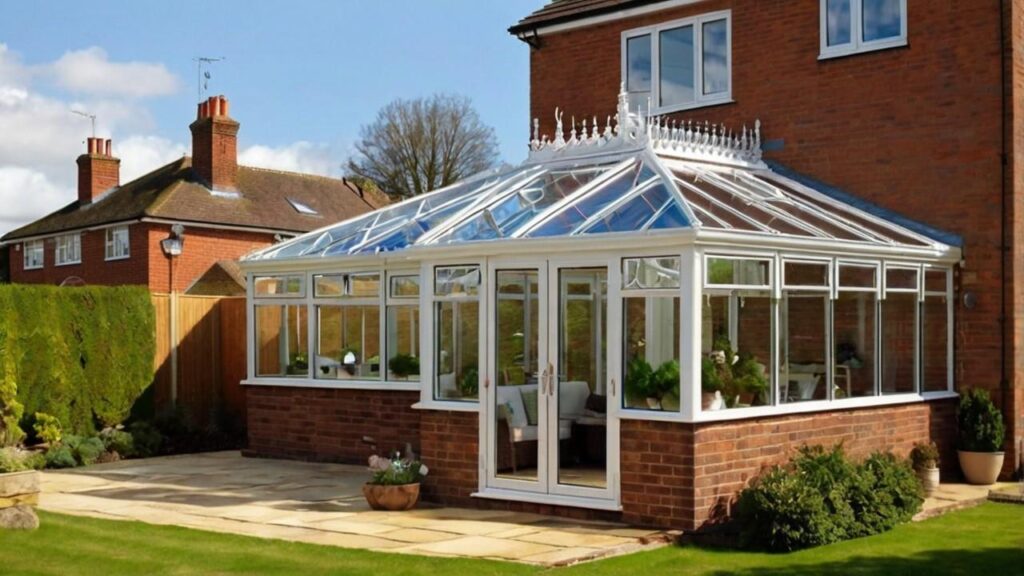
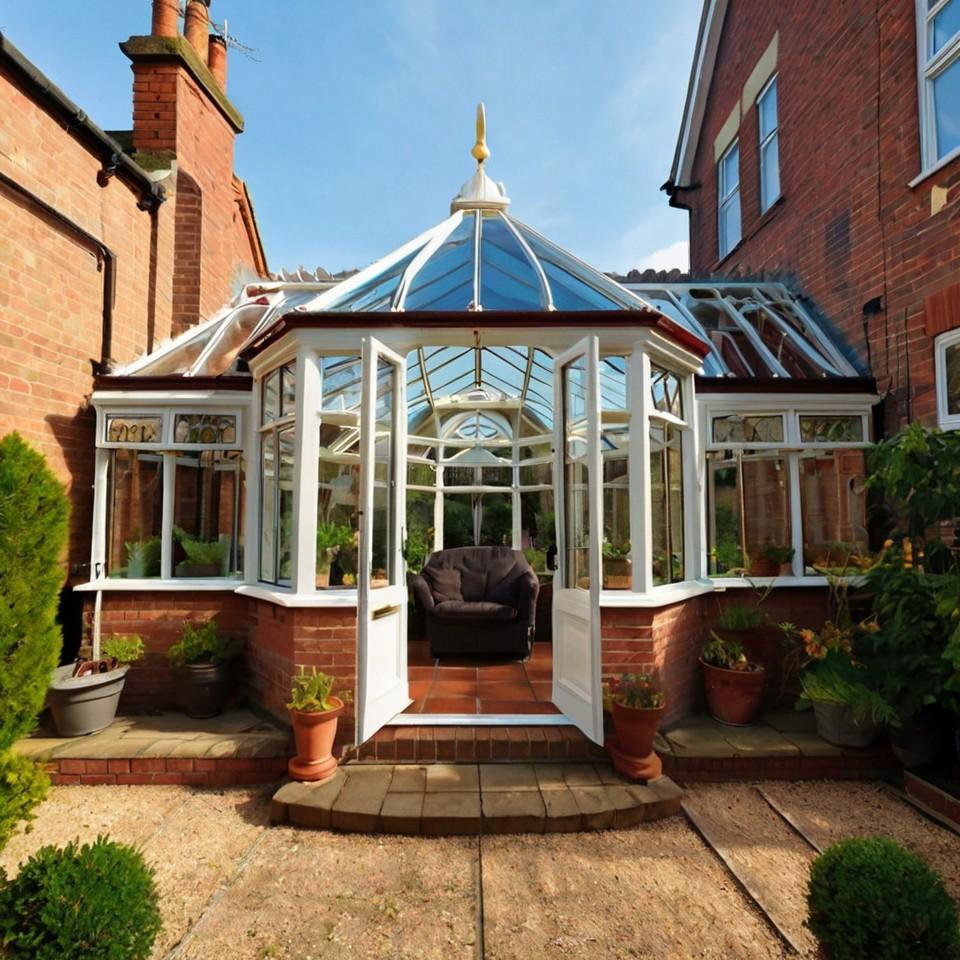
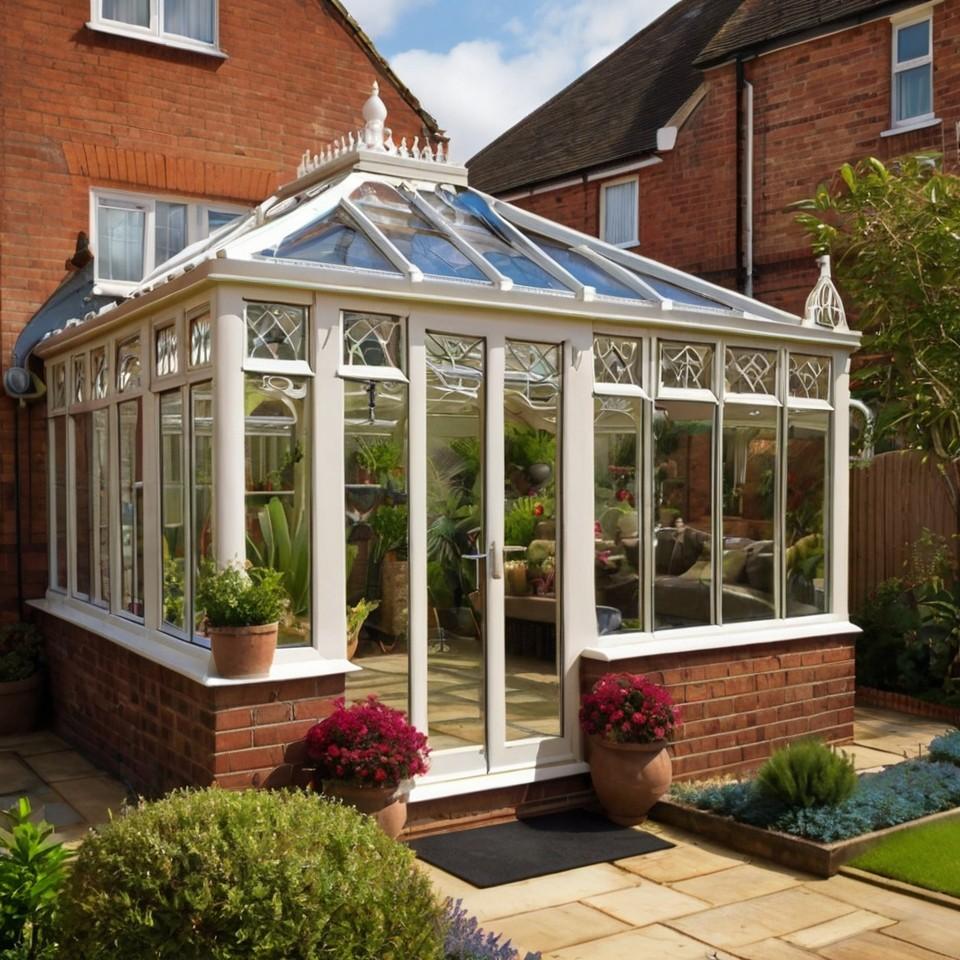
Modern Updates
Today’s Victorian conservatories can include new features that make them more comfortable. Modern glass and heating systems help control the temperature better than ever before. Smart technology adds convenience while keeping the traditional look people love.
Energy Saving
Today’s conservatories include many energy-saving features. New glass types keep heat in better. Modern insulation improves temperature control. Special coatings reflect excess heat. Better seals prevent unwanted drafts. Efficient heating systems save money.
New Technology
Modern additions make conservatories more comfortable. Automatic vents adjust airflow as needed. Smart controls manage temperature from your phone. LED lighting saves energy while looking great. Remote controls add convenience to daily use. Temperature sensors help maintain perfect comfort.
Final Thoughts: Victorian conservatories bring beauty and extra space to your home. They cost more than basic additions but offer unique benefits. Your house value can increase with this special feature. Careful planning helps avoid future problems. Regular care keeps everything working well.
The success of your conservatory depends on good choices. Pick experienced builders who understand Victorian style. Use quality materials that will last many years. Follow a regular maintenance schedule. Soon you’ll have a beautiful room your family will enjoy.
Remember that each Victorian conservatory reflects its owner’s taste. Take time to plan the details that matter to you. Think about how you’ll use the space every day. Choose colors and designs you’ll love long-term. Create a space that makes you happy whenever you see it.
How much does a Victorian conservatory cost?
A typical Victorian conservatory costs between $20,000 to $50,000. The final price depends on size, materials, and decorative features. Custom designs with premium materials can exceed $75,000.
Do I need planning permission for a Victorian conservatory?
Most single-story conservatories don’t need permission if they meet size limits and building regulations. However, listed buildings or conservation areas require special approval.
What’s the best material for a Victorian conservatory frame?
Modern uPVC offers affordability and low maintenance, while aluminum provides strength and slim profiles. Traditional hardwood gives authentic period looks but needs regular maintenance.
How long does it take to build a Victorian conservatory?
Construction typically takes 3-4 weeks from foundation to completion. Complex designs or custom features might extend this timeline. Weather conditions can affect the building schedule.
Can I use my Victorian conservatory all year round?
Yes, with proper insulation and climate control. Modern glass technology, heating systems, and ventilation make these spaces comfortable throughout all seasons.
What’s the average lifespan of a Victorian conservatory?
A well-maintained Victorian conservatory can last 20-25 years. Quality materials and regular upkeep can extend this significantly. Major components might need replacement after 20 years.
How do I prevent my conservatory from overheating?
Install roof blinds, use solar control glass, and ensure proper ventilation. Modern temperature-controlled vents and cooling systems help maintain comfortable conditions.
What’s the difference between Victorian and Edwardian conservatories?
Victorian conservatories have a rounded appearance with ornate details. Edwardian styles feature rectangular shapes and cleaner lines while maintaining period elegance.
Can I install a Victorian conservatory on an existing patio?
Yes, If the foundation is suitable. A structural engineer should assess the existing base. Additional reinforcement might be needed for proper support.
How much value does a Victorian conservatory add to my home?
A quality Victorian conservatory typically adds 5-10% to your home’s value. The exact amount depends on design quality, construction, and local market conditions.
UK-Based Support Team
Our knowledgeable, UK-based support team is familiar with local markets, regulations, and trends, so you’ll always get relevant and current advice.
Simply fill in your details, and Receive competitive quotes from accredited companies tailored to your project!
Our team brings almost two decades of expertise in the UK home improvements sector, giving you unique insights into its challenges and possibilities. Reaching out to us means tapping into a wealth of experience from home improvements experts who know the British market inside out.
We offer unparalleled market insights, a network of skilled professionals vetted, accredited and reference – credit checked who can handle projects of all sizes. Our knowledgeable UK-based team will ensure a smooth, informed experience from start to finish.
All our suppliers are members of one or more consumer protection groups below.












